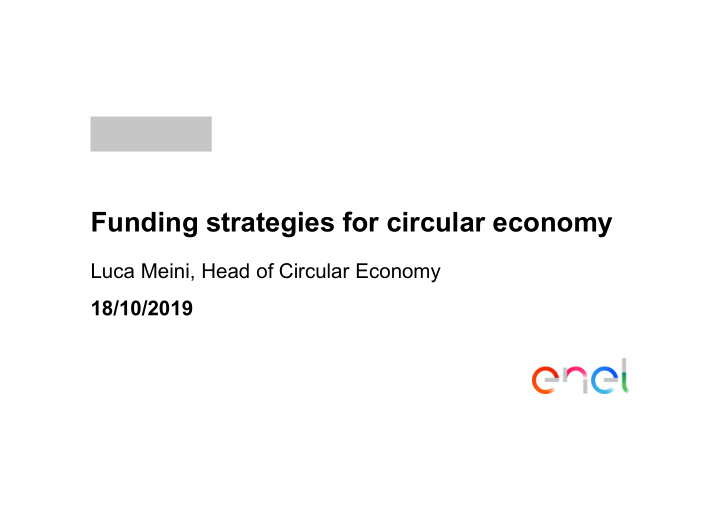



Funding strategies for circular economy Luca Meini, Head of Circular Economy 18/10/2019
Enel today We are a leader in the new energy world 73 mn end users 1st network operator 1 43 GW capacity 2 World’s largest private 46.5 GW capacity 3 player 2 in renewables 5.7 GW demand response Largest retail customer 64 mn customers 4 base worldwide 1 1. By number of customers. Publicly owned operators not included 2. By installed capacity. Includes managed capacity for 4.2 GW 3. It includes nuclear 1 4. Includes customers of free and regulated power and gas markets
Circular Economy What is circular economy Sustainable inputs: from renewable, reuse, Circular Design recycle Increased product life : Extending life through design, maintenance and repair Sharing : increase utilization rate through shared use/access/ownership Product as a service : sell to clients a New life Value cycles service instead of a product Recovery New life cycles : maintain value through upcycling, reuse and recycling Optimal use 2
Value sources Lower exposure to New technologies as commodities price enablers of circular solutions Lower exposure to New business model to environmental risks créate value from use vs. sale Keeping material value Minimize environmental impact Value not from sales but Maintenance + services from services instead of resources extraction + automation 3
Circular Economy Where is the value Linear to circular - Financial Business Value chain Metrics Metrics value generation operator Suppliers New revenue CE sources Financing CE industrial financial • Services conditions metrics Business metrics • Products Industrial • asset derisking Clients 4
Circular Economy How to measure it Input Closing the loop Business models New life cycles % renewable % to upcycling % to reuse % from reuse % to recycle % from recycle Load factor Life % to waste increase extension % not renewable References https://corporate.enel.it/content/dam/enel-it/azienda/circular/KPI-Model_3.2018_en.pdf 5
Recommend
More recommend